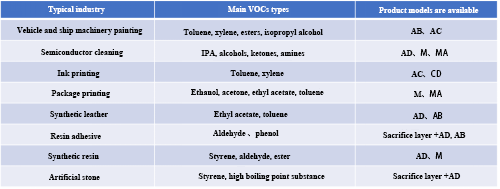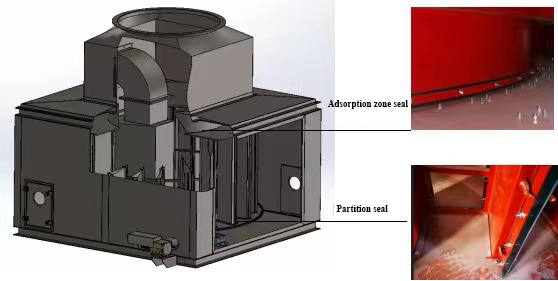 English
English 简体中文
简体中文  Esperanto
Esperanto  Afrikaans
Afrikaans  Català
Català  שפה עברית
שפה עברית  Cymraeg
Cymraeg  Galego
Galego  繁体中文
繁体中文  Latviešu
Latviešu  icelandic
icelandic  ייִדיש
ייִדיש  беларускі
беларускі  Hrvatski
Hrvatski  Kreyòl ayisyen
Kreyòl ayisyen  Shqiptar
Shqiptar  Malti
Malti  lugha ya Kiswahili
lugha ya Kiswahili  አማርኛ
አማርኛ  Bosanski
Bosanski  Frysk
Frysk  ភាសាខ្មែរ
ភាសាខ្មែរ  ქართული
ქართული  ગુજરાતી
ગુજરાતી  Hausa
Hausa  Кыргыз тили
Кыргыз тили  ಕನ್ನಡ
ಕನ್ನಡ  Corsa
Corsa  Kurdî
Kurdî  മലയാളം
മലയാളം  Maori
Maori  Монгол хэл
Монгол хэл  Hmong
Hmong  IsiXhosa
IsiXhosa  Zulu
Zulu  Punjabi
Punjabi  پښتو
پښتو  Chichewa
Chichewa  Samoa
Samoa  Sesotho
Sesotho  සිංහල
සිංහල  Gàidhlig
Gàidhlig  Cebuano
Cebuano  Somali
Somali  Тоҷикӣ
Тоҷикӣ  O'zbek
O'zbek  Hawaiian
Hawaiian  سنڌي
سنڌي  Shinra
Shinra  Հայերեն
Հայերեն  Igbo
Igbo  Sundanese
Sundanese  Lëtzebuergesch
Lëtzebuergesch  Malagasy
Malagasy  Yoruba
Yoruba  Español
Español  Português
Português  русский
русский  Français
Français  日本語
日本語  Deutsch
Deutsch  tiếng Việt
tiếng Việt  Italiano
Italiano  Nederlands
Nederlands  ภาษาไทย
ภาษาไทย  Polski
Polski  한국어
한국어  Svenska
Svenska  magyar
magyar  Malay
Malay  বাংলা ভাষার
বাংলা ভাষার  Dansk
Dansk  Suomi
Suomi  हिन्दी
हिन्दी  Pilipino
Pilipino  Türkçe
Türkçe  Gaeilge
Gaeilge  العربية
العربية  Indonesia
Indonesia  Norsk
Norsk  تمل
تمل  český
český  ελληνικά
ελληνικά  український
український  Javanese
Javanese  فارسی
فارسی  தமிழ்
தமிழ்  తెలుగు
తెలుగు  नेपाली
नेपाली  Burmese
Burmese  български
български  ລາວ
ລາວ  Latine
Latine  Қазақша
Қазақша  Euskal
Euskal  Azərbaycan
Azərbaycan  Slovenský jazyk
Slovenský jazyk  Македонски
Македонски  Lietuvos
Lietuvos  Eesti Keel
Eesti Keel  Română
Română  Slovenski
Slovenski  मराठी
मराठी  Srpski језик
Srpski језик
Zeolite drum introduction
2023-12-23
Zeolite drum introduction

The adsorption function of zeolite drum is mainly realized by the high Si-Al ratio zeolite loaded inside.
Zeolite relies on its own unique void structure, the size of the aperture is uniform, the internal void structure is developed, the specific surface area is large, the adsorption capacity is strong, contains a large number of invisible pores, 1 gram of zeolite material in the aperture, the specific surface area can be as high as 500-1000 square meters after it is expanded, higher for special purposes.
Physical adsorption mainly occurs in the process of removing impurities in the liquid and gas phases of zeolite. The porous structure of zeolite provides a large amount of specific surface area, so that it is very easy to absorb and collect impurities. Due to the mutual adsorption of molecules, a large number of molecules on the zeolite pore wall can produce a strong gravitational force, just like a magnetic force, so as to attract impurities in the medium to the aperture.
In addition to physical adsorption, chemical reactions often occur on the surface of zeolite. The surface contains a small amount of chemical binding, functional group form of oxygen and hydrogen, and these surfaces contain ground oxides or complexes that can chemically react with the adsorbed substances, so as to combine with the adsorbed substances and aggregate to the interior and surface of zeolite.
Zeolite technology introduction
According to the working conditions of customers, different types of zeolite are selected to have more efficient adsorption capacity. According to common working conditions, zeolite drum models are as follows:

Adsorption concentration process of zeolite drum
The adsorption concentration process of zeolite drum is divided into three steps:
1. The exhaust gas containing VOCs is changed into clean gas by the outer ring of the cylinder through the zeolite cylinder module, and is removed by the inner ring. In this process, the VOCs in the exhaust gas are firmly adsorbed in the zeolite module by using the special pore structure and high specific surface characteristics of the zeolite module with high Si-Al ratio.
2. Zeolite drum is divided into adsorption zone, desorption zone and cooling zone. During operation, the drum rotates slowly to ensure that the drum module is transferred to the desorption zone before adsorption saturation for high temperature desorption, and then enters the cooling zone for cooling and cooling to regain adsorption capacity;
3. When the zeolite module is transferred to the desorption zone, a small stream of hot air passes through the inner ring of the drum through the drum module of the desorption zone to purge and desorption regeneration of the zeolite module. The small stream of high concentration waste gas from desorption then enters the post-treatment process.
Technical advantages of zeolite drum
1. Valid partition
The partition design of zeolite drum is the key to realize its continuous absorption and desorption function. The zeolite drum is divided into adsorption zone, desorption zone and cooling zone with reasonable partition Angle to maximize the utilization rate of zeolite module.
2. Efficient concentration
The concentration ratio of zeolite is the key to ensure its operation safety and energy saving. Reasonable concentration ratio design can achieve the highest treatment efficiency with the lowest operating energy consumption under the premise of ensuring safety. The maximum concentration ratio of zeolite drum in continuous operation can reach 30 times. Intermittent operation can be achieved under special conditions.
3. High temperature desorption
Zeolite module itself does not contain any organic matter, has good flame retardant performance and high temperature resistance. The desorption temperature is 180~220℃, and the heat resistance temperature in use can reach 350℃. Desorption is complete and VOCs concentration rate is high. The zeolite module can withstand a maximum temperature of 700℃, and can be regenerated offline at high temperature.
4. Efficient purification
After pretreatment by the filter device, the VOCs waste gas enters the cylinder adsorption area to be adsorbed and purified, and the highest adsorption efficiency can reach 98%.
5. The module is easy to disassemble and replace
Standardized size, can be individually replaced broken or heavily contaminated modules.
6. Offline regeneration service
The adsorption efficiency decreases after the module is used for a long time and the treatment efficiency decreases. According to the pollution status of zeolite module, the pollution rating is carried out to determine the regeneration process and off-line regeneration.

Drum construction


1:The cylinder seal is made of fluoro-silicon sealing strip, which can withstand 300℃ for a short time and can run continuously under 200℃.

2:The drum system shall be insulated with fireproof glass fiber and galvanized steel coating. All the joints of the insulation layer must be folded and caulked to prevent wind and rain.
3:The adsorption zone and desorption zone are each equipped with a differential pressure transmitter, with a measuring range of 0-2500pa; Brand: Deville. The drum differential pressure gauge is installed on one side of the motor inspection door of the drum box, and the terminal of the instrument is reserved outside the drum box.
4:Rotary motor brand: Japan Mitsubishi.
5:The inner structural material of the drum is SUS304 and the support plate Q235.
6:Drum shell structure material is carbon steel.
7:The equipment is equipped with lifting lugs and support seats for crane transportation, installation, operation and maintenance.
technical requirements
1 Working condition Requirements
1, adsorption temperature and humidity
Molecular sieve drum has clear requirements for the temperature and humidity of the exhaust gas. In general, under the working conditions of temperature ≤35℃ and relative humidity ≤75%, the drum can be used normally. Under extreme conditions, such as temperature ≥35℃, relative humidity ≥80%, the efficiency will drop sharply; If the waste gas contains dichloromethane, ethanol, cyclohexane and other difficult adsorption substances, the working temperature should be less than 30℃; When the temperature and humidity of the exhaust gas entering the cylinder do not meet the design requirements, special design is required.
2. Desorption temperature
The highest temperature of desorption is 300℃, the lowest temperature is 180℃, and the
daily desorption temperature is 200℃. Use fresh air for desorption, do not use RTO or CO exhaust; When the desorption temperature does not conform to the design requirements, the processing efficiency cannot be guaranteed. After desorption is complete, the drum module should be purged to normal temperature before continuing to use.
3, air volume:
under normal circumstances, adsorption wind speed should be in accordance with the design value requirements, not more than 10% of the required wind speed or less than 60% of the required wind speed, if the adsorption wind speed does not meet the design wind speed, can not guarantee the processing efficiency.
4, concentration:
the design concentration of the drum is the maximum concentration, when the concentration does not meet the design requirements, the processing efficiency cannot be guaranteed.
5, dust, paint fog:
The dust concentration in the exhaust gas entering the cylinder should not exceed 1mg/Nm3, and the paint fog content should not exceed 0.1mg /Nm3, so the pre-treatment device generally contains a multi-level filtration device, such as G4\F7\F9 three-stage filtration module in series; If the cylinder pollution, inactivation, blockage and other phenomena caused by improper treatment of dust and paint fog will not be able to guarantee the processing efficiency of the cylinder.
6, high boiling point substances
High boiling point substances (such as VOCs with a boiling point higher than 170 ° C) are easily adsorbed on the cylinder, in the usual operating mode, the desorption temperature is not enough to completely remove it, in this state of long-term operation, high boiling point VOCs will accumulate a large number of cylinders on the module, occupy the adsorption site, affect the overall performance of the system, and may produce safety risks such as braising.For such conditions, high temperature regeneration process can be used to regularly detect and perform high temperature regeneration operation on the drum module; The adsorption performance cannot be guaranteed when the high boiling point substance is attached to the drum module and it is not desorbed in time.For such conditions, high temperature regeneration process can be used to regularly detect and perform high temperature regeneration operation on the drum module; The adsorption performance cannot be guaranteed when the high boiling point substance is attached to the drum module and it is not desorbed in time.
2 Drum module replacement installation requirements
1, molecular sieve drum module for fragile products, installation should be handled lightly, avoid throwing, smashing, extrusion.
2. If the molecular sieve drum module is soaked in water, please contact the manufacturer and dry it under the guidance of the manufacturer.
3. After the installation of the molecular sieve drum, it is recommended to use hot air desorption at 220℃ for about 30 minutes before use.




